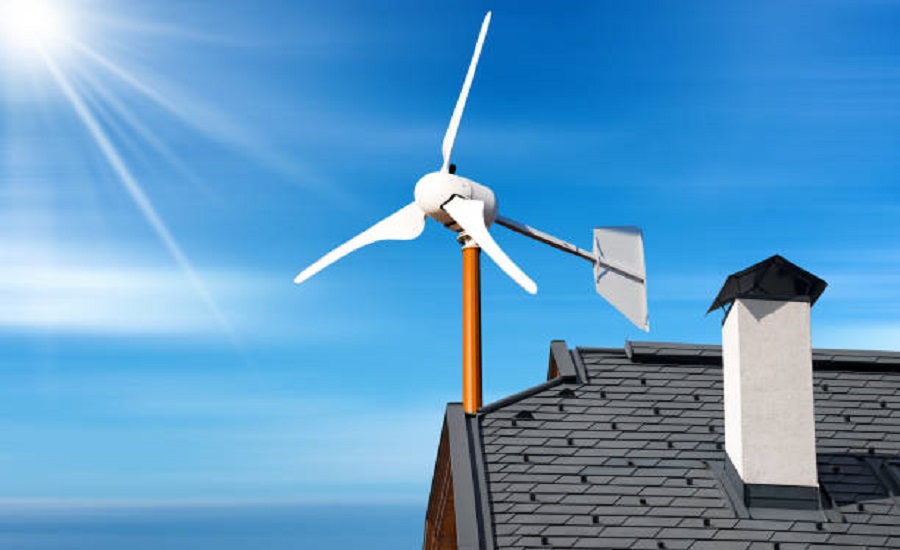The global small wind power market is poised for substantial growth through 2032, driven by a combination of technological advancements, increasing demand for clean and decentralized energy, and supportive policy frameworks. Small wind turbines, typically defined as systems with capacities under 100 kilowatts, are gaining traction as an efficient and sustainable energy solution for remote, rural, and off-grid applications.
Get a Free Sample Report – https://www.skyquestt.com/sample-request/small-wind-power-market
Small wind power systems offer a decentralized way to produce electricity, particularly in areas where grid access is limited or unreliable. These systems are primarily used for residential, agricultural, and small commercial purposes. As the global push toward carbon neutrality intensifies, small wind power is becoming an increasingly attractive option alongside solar photovoltaics and other renewables.
The small wind power market size was valued at USD 2.06 billion in 2024 to USD 3.84 billion by 2032, growing at a CAGR of 8.2% during the forecast period (2025-2032), reflecting expanding adoption in both developed and developing economies. The growing awareness of the environmental impact of fossil fuels and rising energy costs are prompting consumers and businesses to consider small-scale renewable alternatives.
Key Market Drivers
- Energy Decentralization and Rural Electrification: One of the most important factors contributing to the market’s growth is the need for energy access in remote and rural areas. Small wind systems are particularly suitable for these environments due to their low operating costs, scalability, and minimal infrastructure requirements.
- Government Incentives and Policy Support: Incentives such as feed-in tariffs, tax credits, and subsidies are encouraging investment in small wind energy. National and regional governments are incorporating small wind power into their broader energy strategies to meet climate targets and reduce dependence on imported fuels.
- Technological Innovations: Advancements in turbine design, materials, and control systems are enhancing the efficiency and reliability of small wind turbines. Innovations in hybrid systems, combining wind and solar, are also increasing their attractiveness for off-grid energy solutions.
- Environmental Sustainability Goals: As industries and communities commit to more sustainable operations, small wind power provides a clean energy source with a low carbon footprint. The demand for environmentally responsible energy sources continues to rise globally.
Make an Inquiry to Address your Specific Business Needs – https://www.skyquestt.com/speak-with-analyst/small-wind-power-market
Market Segmentation
- The small wind power market is typically segmented by axis type (horizontal and vertical), grid connectivity (on-grid and off-grid), and application (residential, commercial, and industrial).
- Horizontal Axis Wind Turbines (HAWTs) dominate the market due to their higher efficiency and maturity. However, Vertical Axis Wind Turbines (VAWTs) are gaining attention for urban and space-constrained settings.
- Off-grid systems are expected to remain dominant due to their relevance in rural electrification, though on-grid installations are rising in urban settings where feed-in tariffs and net metering are applicable.
- The residential and agricultural sectors are the primary users of small wind systems, followed by small-scale commercial facilities, particularly in areas seeking to reduce operational costs.
Regional Outlook
- North America and Europe have historically led the market due to established regulatory frameworks and early adoption of clean technologies. Both regions are expected to maintain steady growth.
- Asia-Pacific is emerging as a high-growth region, particularly in countries such as China and India, where rural electrification and renewable energy targets are national priorities.
- Latin America and Africa present untapped opportunities, driven by the need to electrify remote regions and reduce energy poverty.
Take Action Now: Secure Your Small Wind Power Market Today – https://www.skyquestt.com/add-to-cart-buy-now/small-wind-power-market
Top Players in Small Wind Power Market
- Bergey Windpower Co. (United States)
- SD Wind Energy (United Kingdom)
- Aeolos Wind Energy Ltd. (United Kingdom)
- Ryse Energy (United Arab Emirates)
- Northern Power Systems Inc. (United States)
- City Windmills Holdings PLC (United Kingdom)
- Wind Energy Solutions (Netherlands)
- UNITRON Energy Systems Pvt. Ltd. (India)
- Shanghai Ghrepower Green Energy Co. Ltd. (China)
- TUGE Energia OU (Estonia)
- Envergate Energy AG (Switzerland)
- Kingspan Group (Ireland)
- Kliux Energies (Spain)
- Superwind GmbH (Germany)
- Eocycle Technologies Inc. (Canada)
- XZERES Corp. (United States)
- Sinovel Wind Group Co., Ltd. (China)
- New World Wind (France)
Challenges and Constraints
- Despite its potential, the small wind power market faces challenges such as:
- Intermittency and variability of wind resources
- High upfront costs relative to solar systems
- Maintenance and technical skill gaps, particularly in rural areas
- Regulatory and permitting barriers in some jurisdictions
Addressing these obstacles will be crucial for market players and policymakers to unlock the full potential of small wind energy.
Future Outlook
The small wind power market is expected to witness consistent expansion through 2032, fueled by ongoing innovation, expanding rural energy initiatives, and rising demand for clean and local energy sources. As more regions embrace decentralized power systems and climate-conscious energy strategies, small wind turbines will likely play an increasingly important role in the global renewable energy landscape.
Read Small Wind Power Market Report Today – https://www.skyquestt.com/report/small-wind-power-market
Emerging trends such as microgrids, hybrid renewable systems, and energy storage integration are set to redefine how small wind power is deployed and optimized in the coming decade. The outlook for the small wind power market is promising, with significant opportunities for growth, innovation, and impact across both industrialized and developing economies by 2032.
